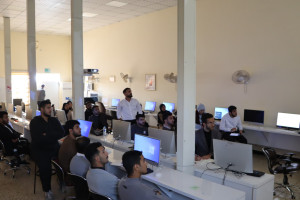Dr. Dressian at the College of Engineering at the University of Basrah, Professor Dr. Fadel Rahma Taher and Professor Abdul Basit Abdul Samad Jasim published a research paper. In the Bulletin of the World Health Organization, classified within the Clargate container ( Impact factor = 6.818, entitled:
Epidemiological Characteristics of COVID-19 Ongoing Epidemic in Iraq
Epidemiological characteristics of the novel coronavirus COVID-19 epidemic in Iraq
Where the epidemiological characteristics of COVID-19 in Iraq were determined by collecting data issued by the Iraqi Ministry of Health for the period from February 27, 2020 to April 1, 2020 and represented by a proposed Dynamical Model consisting of seven differential equations called the SEIR-QD system and from The advantage of this model is that it shows a set of epidemiological variables that are usually hidden. Including the number of cases exposed to infection and infectious cases. Parameters of the mathematical model were selected using the Particle Swarm Optimization -PSO algorithm to search for the optimal solution.
The model defines the characteristics of the spreading epidemic from infection rate β, incubation period rate γ, protective index λ, and mortality rate κ.
The most prominent results, according to the proposed mathematical model, were as follows:
The epidemic in Iraq will reach its peak on May 3, 2020, as shown in the epidemic curve. It is also expected that the total number of infected people will be around 19000 (nineteen thousand infected), and the epidemic will stop by mid-July 2020.
Curves representing the epidemic were also drawn in the event that the average incubation period varied from one day to six days and its effect on the total number of infections, the number of exposed and infected persons.







